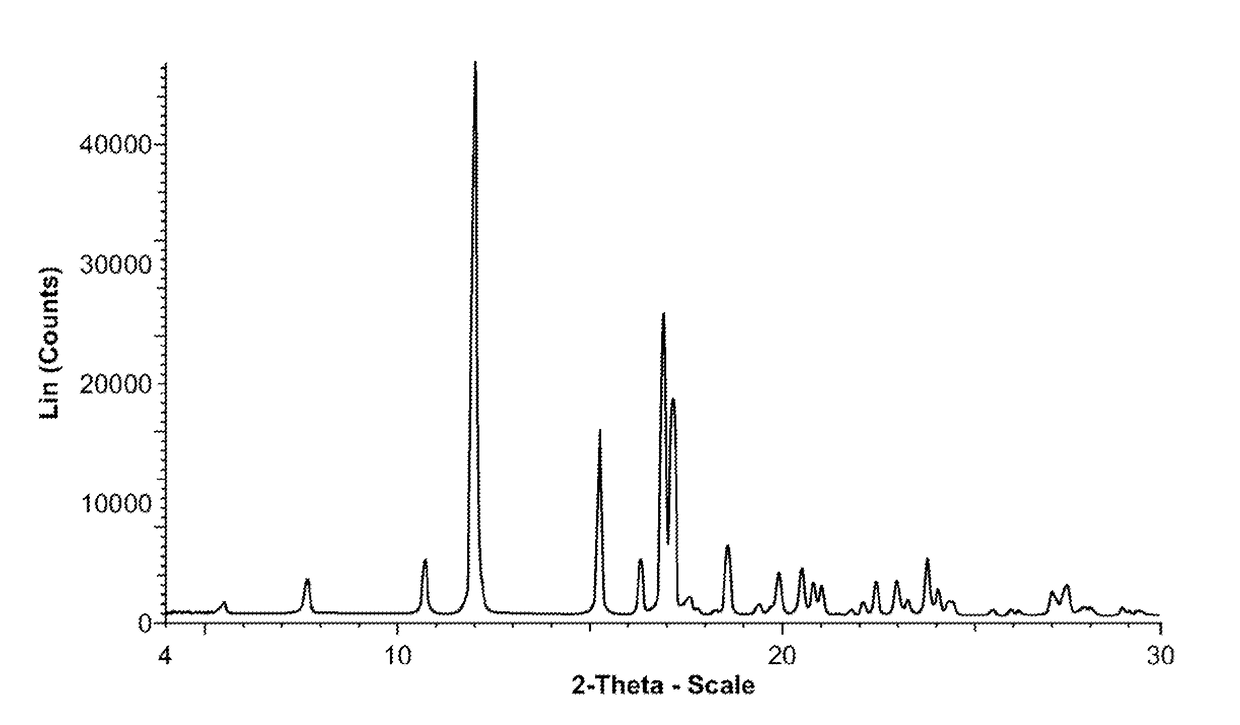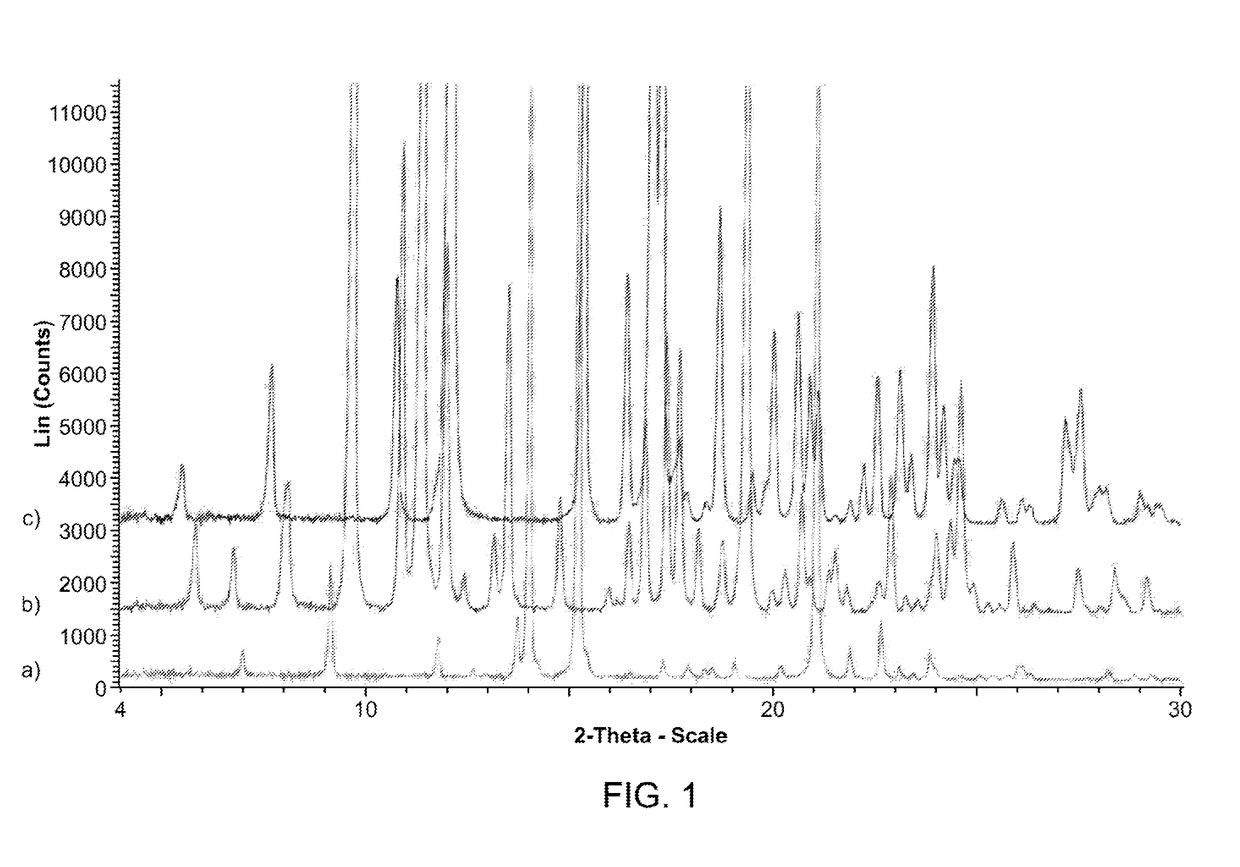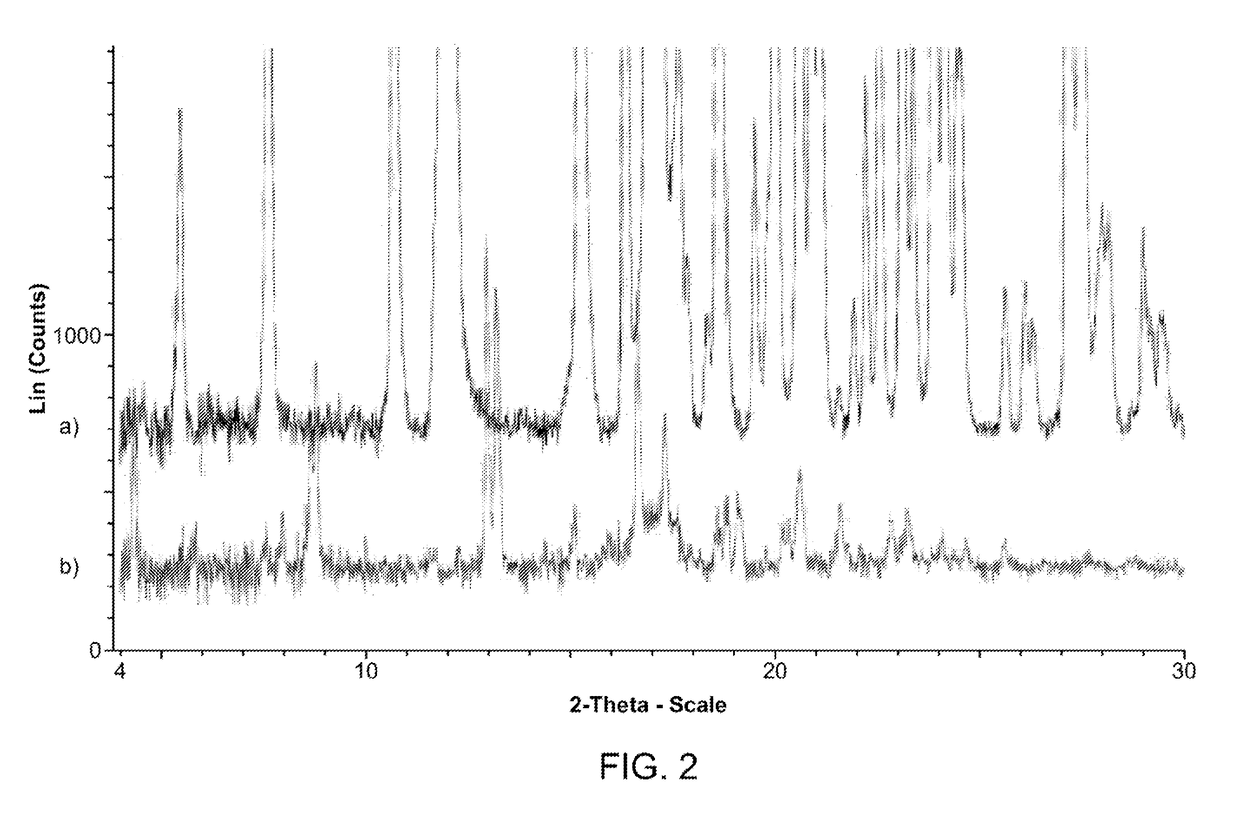Polymorphic and amorphous forms of (r)-2-hydroxy-2-methyl-4-(2,4,5-trimethyl-3,6-dioxocyclohexa-1,4-dienyl)butanamide
a technology of amorphous forms and hydroxy acids, which is applied in the field of polymorphic and amorphous forms of (r)2hydroxy2methyl4(2, 4, 5trimethyl3, 6dioxocyclohexa-1,4dienyl) butanamide, can solve the problems of oxidative damage to the cellular structure and machinery, cell damage and cell death, and the rate of damage to the cell membrane exceeds the capacity of systems which control or repair,
- Summary
- Abstract
- Description
- Claims
- Application Information
AI Technical Summary
Benefits of technology
Problems solved by technology
Method used
Image
Examples
example 1
of (R)-2-hydroxy-2-methyl-4-(2,4,5-trimethyl-3,6-dioxocyclohexa-1,4-dienyl)butanamide (Form I)
example 1a
of (1 S, 2S)-(+)-Pseudoephedrine Free Base
[0195]To a suspension of (1S, 2S)-(+)-Pseudoephedrine hydrochloride salt (300 g, Spectrum) in 2-MeTHF (1.5 L, 5 vol) was added 20% Aq NaOH solution (750 mL, 2.5 vol) and the mixture was stirred for 30 min (some solids remained undissolved) and transferred to a separatory funnel. The lower aqueous layer was drained along with solids that remained at the interphase and back extracted with 2-MeTHF (750 mL, 2.5 vol), the undissolved solids completely dissolved to form two clear layers. The combined organic layers were evaporated to dryness on rotavapor and the solids obtained were dried in a vacuum oven at 50° C. overnight to afford 240.3 g of free base as a white solid (97.7% recovery).
example 1b
ion of (1S,2S)-Pseudoephedrine from 2-MeTHF / heptane
[0196](1S,2S)-pseudoephedrine (Sigma-Aldrich, sku#212464, 8.2 g) was dissolved at 50° C. in 2-MeTHF (41 ml, 5 vol). The resulting solution was diluted with heptane (82 ml, 10 vol) and the resulting suspension was stirred at room temperature overnight. The crystallized (1S,2S)-pseudoephedrine was filtered off and dried overnight at 40° under vacuum affording 6.4 g (78%) of white crystalline material. Filtrate was discarded to general waste.
[0197]Relatively low (78%) crystallization yield prompted an additional crystallization experiment with higher heptane to 2-MeTHF ratio. Crystalline (1S,2S)-pseudoephedrine obtained in the experiment above was dissolved at 50° C. in 2-MeTHF (32 ml, 5 vol). The resulting solution was diluted with heptane (32 ml, 5 vol) and the resulting suspension was chased with heptane (3×50 ml) on rotary evaporator until molar ration of 2-MeTHF to heptane became lower than 6% by NMR. The resulting suspension was ...
PUM
| Property | Measurement | Unit |
|---|---|---|
| v/v | aaaaa | aaaaa |
| temperature | aaaaa | aaaaa |
| solubility | aaaaa | aaaaa |
Abstract
Description
Claims
Application Information
 Login to View More
Login to View More - R&D
- Intellectual Property
- Life Sciences
- Materials
- Tech Scout
- Unparalleled Data Quality
- Higher Quality Content
- 60% Fewer Hallucinations
Browse by: Latest US Patents, China's latest patents, Technical Efficacy Thesaurus, Application Domain, Technology Topic, Popular Technical Reports.
© 2025 PatSnap. All rights reserved.Legal|Privacy policy|Modern Slavery Act Transparency Statement|Sitemap|About US| Contact US: help@patsnap.com



